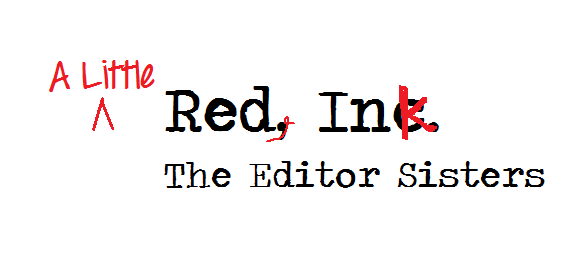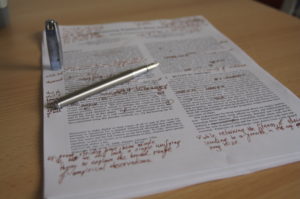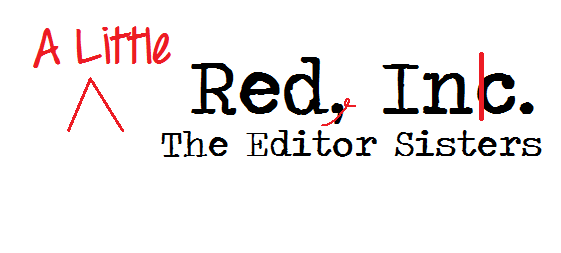What is a proofread?
I’m sure you know by now the importance of wisdom as you choose a freelance editor. If you’ve missed the other posts defining the levels of editing, you can use the links below to catch up.
Today, let’s talk about what a proofread entails.
The proofread is the final step…
before going to print (or uploading to online retailers).
Your book should’ve already had both a macro and copy edit, and—ideally—it will have even been formatted before this. The proofreader’s job is to catch remaining typos and word repetition, spot inconsistencies in formatting, make note of spacing issues, and basically get your book into perfect condition for print.
If you’re working with a publishing house, they will have certain in-house standards. You may or may not be involved in this step of the process.
Ways to proofread.
Some proofreaders prefer to print out the manuscript and do this by hand. Believe me, it makes a difference. Even you would spot different things if you did this step on your own. Our eyes just see things differently in print than they do on a computer screen.
#ProofreadingTip: Print a formatted copy or PDF of your manuscript. Our eyes just see things differently in print than they do on a computer screen. #amwriting #amediting Click To TweetNOTE: If you hire a proofreader to do this, they will likely include a printing fee. There may be a standard fee, or they may charge by the page. Don’t be afraid to ask 1) whether they use clean paper or print on the back of scrap paper (It could save you money); 2) whether you can print a copy and send it to them.
Some—in order to make certain they miss nothing—will proofread backwards. Then, rather than getting caught up in the story, they see each sentence as an individual sentence. This is what I do when I proofread (if I must) for my macro and copy editing clients.
Find someone new.
I don’t proofread for my editing clients if possible. It’s not wise to have the same editor do the macro edit, copy edit, and proofread. If possible, get someone else. Hey, ask your current editor for a recommendation. Many of us have people we’d trust with our own work.
My sister and I (both editing under the A Little Red Ink banner) routinely do proofreading for one another’s clients. That makes it super easy when questions come up.
“Is this word supposed to be capitalized in this story world?”
“I see this odd paragraphing—is that intentional?”
Erynn and I send our clients’ style sheets to each other, and we remain available to answer questions.
The key is making sure the editor hasn’t already been staring at the manuscript for the last 30 or 40 hours. They’ll miss things. A fresh set of eyes is crucial. If you are going to have the same editor proofread, give them time in between rounds. That requires planning on your part, sticking to deadlines. But it’s worthwhile if you’re determined to stick with one person.
A fresh set of eyes is crucial. If you must have the same editor proofread, give them time in between rounds. #editvsproofread #alittleredink Click To TweetWrap-up
If you write in Traditional Publishing Land, this step isn’t your responsibility. However, if you’re braving the Indie Ocean, it’s a must. I know every penny counts. This one’s worth your investment.
Still, it’s possible to avoid a fee if you’ve got some killer beta readers who are willing to read through a formatted copy and let you know if they spot any typos. It’s a great trade. Scratch another author’s back with this deal, and then ask them to scratch yours. You’ll both be better off.
Question
Have you ever read a book and spotted typos? Were you quick to pick up other books by the same author?






 We love helping your growing in your writing career.
We love helping your growing in your writing career.

Wrap-up
If you’re write in Traditional Publishing Land, …
A good example why a proofreader is needed.
Ha! Yes! Thank you for illustrating the importance of a second set of eyes. I’ll correct it now.
Great article! I review several books a week and it is seldom I don’t find typos. Several authors had up to 4 proofreads before I got a copy and were shocked at how many corrections were still found. When reviewing I only read it once to catch inconsistencies (in chap one he was glad he had the car waiting at airport, in chap four he was going to rent a car). When proofreading I do read it backward as you said, and when doing my own, I always print it out.